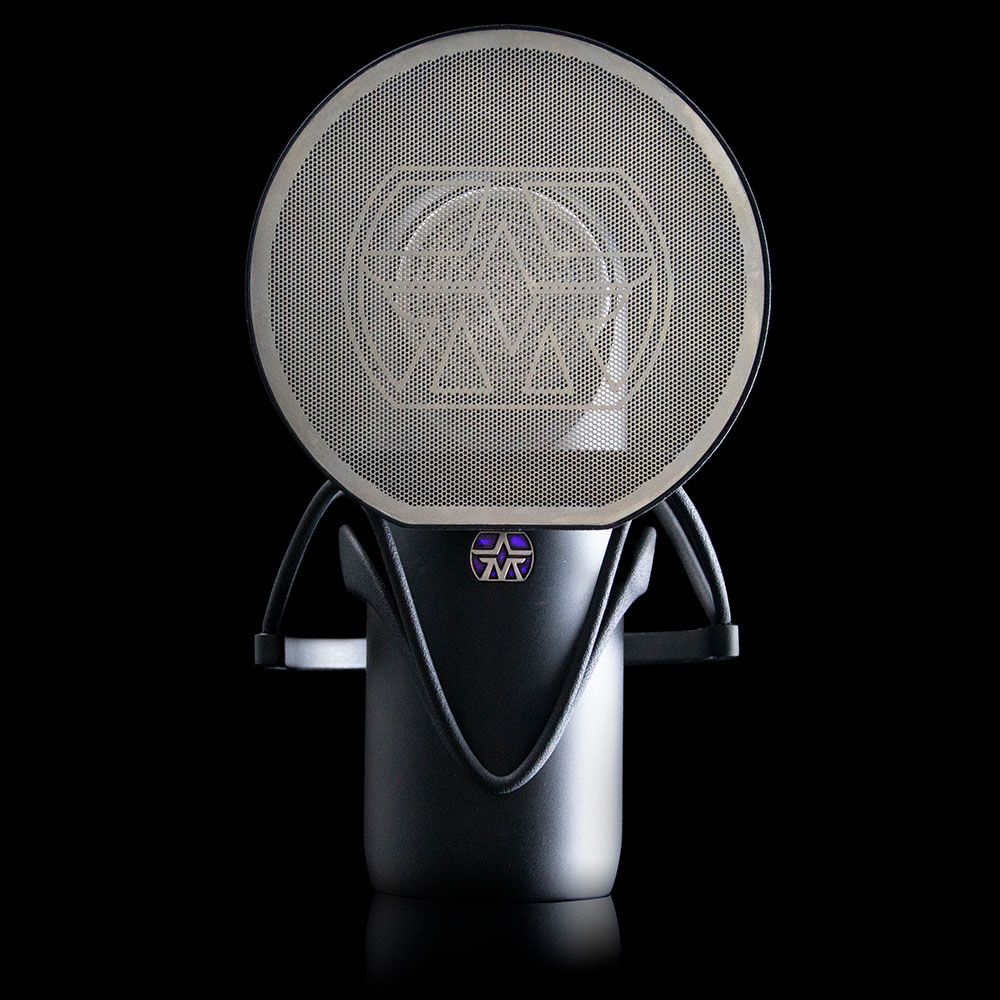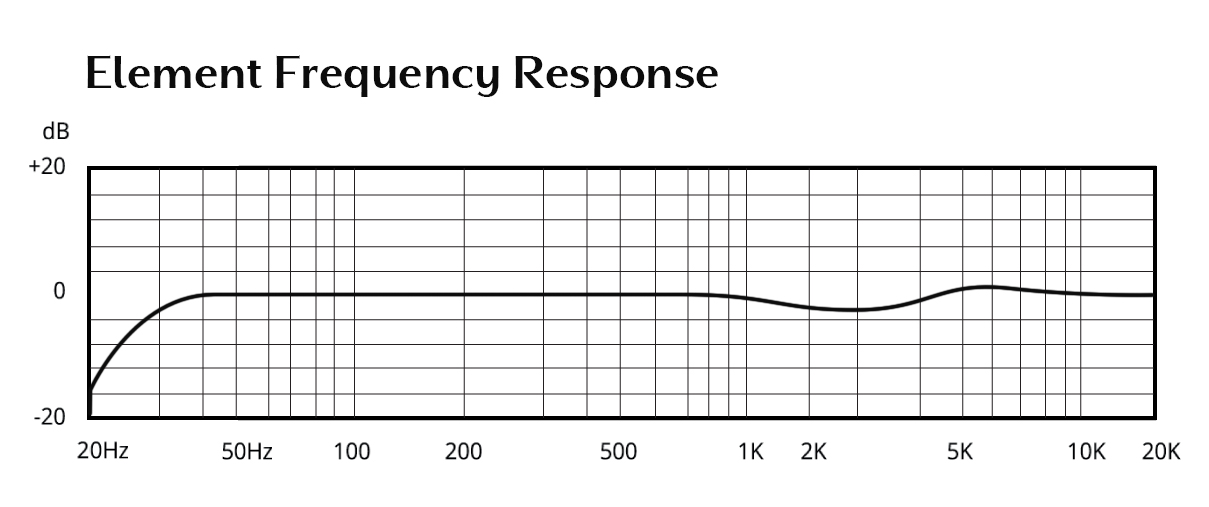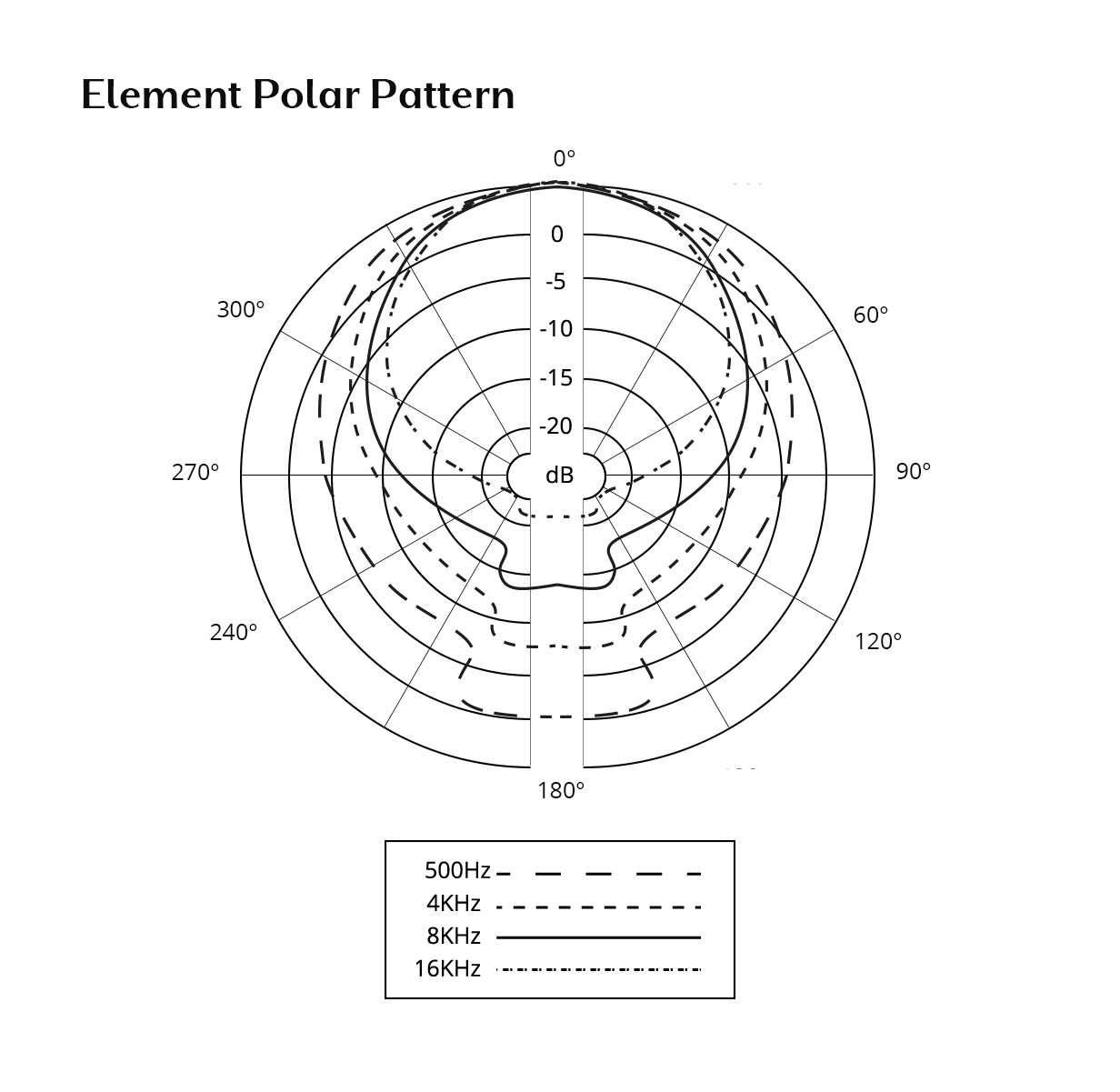The quietest studio mic on the planet, with the widest frequency response. Sounds expensive…
Aston Element works like a dream in the studio, but how did it do in the lab? And why does it matter?
The studio mic is the heart of any recording set-up and yet, until relatively recently, has often been the weakest link in many home-based musicians’ studios. For some time, Aston have been leading the way in makingprofessional quality microphones affordable for those beyond the soundproofed walls of the top studios and production houses.
 Now, with increased access to a real choice of professional quality mics - at prices once associated with those good-looking but harsh-sounding ‘entry level’ models which have spoiled many a great track - the wider music making community is embracing the studio microphone, not just as a functional tool, but as a characterful music-making choice. Singers and songwriters can now own instruments of which they can be just as proud as guitarists are of their Strats and Les Pauls. And with these new emotional attachments come the advocacy; certain models have their fan clubs like never before, and good-natured jousts about which mic is ‘best’ are becoming as commonplace as those between the big guitar brands’ tribal followers.
Now, with increased access to a real choice of professional quality mics - at prices once associated with those good-looking but harsh-sounding ‘entry level’ models which have spoiled many a great track - the wider music making community is embracing the studio microphone, not just as a functional tool, but as a characterful music-making choice. Singers and songwriters can now own instruments of which they can be just as proud as guitarists are of their Strats and Les Pauls. And with these new emotional attachments come the advocacy; certain models have their fan clubs like never before, and good-natured jousts about which mic is ‘best’ are becoming as commonplace as those between the big guitar brands’ tribal followers.
The word ‘best’, applied to a microphone, or any other musical instrument is, of course, subjective and generally contextual - the best choice of mic in that studio, for that particular voice, on a given track – or alternatively it might just be the output of an under-pressure marketing department seeking to justify the eye-watering price tag of their latest shiny new release. There are, of course, scientifically measurable facets of a musical instrument which can back up such claims, but they don’t always cut It in a culture where many still yearn for analogue tape, valves and distortion in the squeaky-clean age of digital precision. What the laboratory says is good is not always what humans want to hear.
And yet, while the sound character of a microphone should certainly be the main reason you choose it, some of those technical specs attributed to it are actually critical to its performance. For example, what lets down most low-priced mics, aside from their typically brittle high-end and lack of detail, is the amount of unwanted noise their budget electronics add to the signal path. This, especially on a track with layered vocals and/or instruments, can add-up to a disastrous amount of hiss which no amount of whizzy plug-ins can effectively remove. All of which leads us neatly back to the Aston Element…
There’s already a subjective consensus as to how good Element sounds, especially on vocals and guitars - after all, thousands of you helped develop its eventual voicing. But Aston‘s design team then went to great lengths to make sure the final mic delivered exactly that sound, the one everyone voted for, with nothing added or removed. That process included the final production prototype being sent to the world’s leading scientific audio measurement organisation, NTi Audio, to face gruelling tests in their specially designed anechoic (acoustically neutral) chamber.
 Typically with a mic costing £159/179€/$199 the hope would be for respectable, if unremarkable, results in such tests, but Element tore up such modest expectations and trampled on them, as Aston microphones tend to do. Perhaps the most remarkable piece of data that NTi returned was the mic’s self-noise (this the nasty type mentioned above). Element’s official rating of 3.8 dBA (A-weighted) makes it, wait for it… the world’s quietest studio microphone! In terms of unwanted noise it’s not just the best in its class, but the best, period. The next quietest we know of, a well-known best-seller from one of the major brands, weighs in at 5 dBA and, as dBA is measured logarithmically, that’s a MASSIVE difference. Remember, Element is mixing it here with mics costing ten, even twenty times as much.
Typically with a mic costing £159/179€/$199 the hope would be for respectable, if unremarkable, results in such tests, but Element tore up such modest expectations and trampled on them, as Aston microphones tend to do. Perhaps the most remarkable piece of data that NTi returned was the mic’s self-noise (this the nasty type mentioned above). Element’s official rating of 3.8 dBA (A-weighted) makes it, wait for it… the world’s quietest studio microphone! In terms of unwanted noise it’s not just the best in its class, but the best, period. The next quietest we know of, a well-known best-seller from one of the major brands, weighs in at 5 dBA and, as dBA is measured logarithmically, that’s a MASSIVE difference. Remember, Element is mixing it here with mics costing ten, even twenty times as much.
There was more… NTi’s measurements showed Element’s frequency range extending far beyond 20kHz and below 20Hz giving it the widest frequency response of any electromagnetic (ribbon or moving coil) microphone ever made! And the smooth flat-line of the response chart shows it captures the critical frequencies (the ones that will chiefly make it on to the final mix) incredibly consistently, with just an ultra-subtle dip around 3kHz (reducing vocal harshness) and an equally gentle lift around 7kHz to add a hint of presence. It’s a smooth operator. Many cheaper mics do extreme things to the signal to provide a supposedly flattering sound, but the problem with this is that it’s very hard to put back what has been taken out. Why should a mic manufacturer make those type of decisions for you? If you’re doing the singing, that’s the voice you want to hear, right?
 Element does sound expensive. It sounds like a million dollars…. it just doesn’t cost very much. That’s what comes of designing and building from ground-up, and tearing up the rule book on what has gone before. It’s a phenomenal blend of engineering and artistry. Even the Ridyon™ capsule, the heart and soul of the mic, is completely new – it takes the best sonic features of the three classic mic genres, ribbon, dynamic, and condenser, while virtually eliminating their respective drawbacks.
Element does sound expensive. It sounds like a million dollars…. it just doesn’t cost very much. That’s what comes of designing and building from ground-up, and tearing up the rule book on what has gone before. It’s a phenomenal blend of engineering and artistry. Even the Ridyon™ capsule, the heart and soul of the mic, is completely new – it takes the best sonic features of the three classic mic genres, ribbon, dynamic, and condenser, while virtually eliminating their respective drawbacks.
The scientific stuff won’t make you love this mic, we hope it’s the sound that will do that. And the price. But it will make sure that whatever you sing or play into it is what comes out the other side. Element, like all Aston mics, simply captures the source sound and delivers it with accuracy, professional quality and Aston character.
By the way, *Element is also the best-looking mic in the world. (*Marketing department, shame on you).
More on Aston Element
Find your nearest retailer
